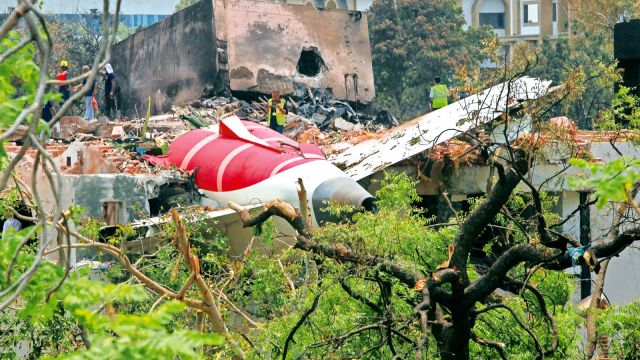
By Jitender Bhargava
Thursday’s Boeing 787-8 crash in Ahmedabad is troubling for multiple reasons. More than 250 people are reported to have lost their lives, including more than 20 on the ground. Different nationalities were involved, reportedly including 53 British nationals. The tragedy took place during the day and was repeatedly shown on television. The fact that Air India has had a relatively good safety record of late has made the tragedy even more shocking. This is also the first time that a Dreamliner 787-8 has been involved in an accident.
It appears that between the takeoff and the crash, the pilot simply had no time. Pilots receive rigorous training to deal with a variety of situations. They are trained to land in an area free of houses and buildings if the aircraft faces a snag during takeoff. The pilot in charge of the ill-fated 787-8 had 8,000-plus hours of flight time. Situations such as the one that arose on Thursday are also a part of the simulation training that pilots undergo. But the time available to the pilot and the buildings just below the aircraft seems to have made it impossible for him to steer the passengers to safety. Civil aviation rules state that airports should be planned at a distance from buildings. Increasingly, however, cities are getting closer and closer to airports. The losses on the ground have made the tragedy even more heart-rending.
Almost every aircraft accident is followed by a familiar knee-jerk response — that flying is unsafe. But an airline should not be judged by a one-off accident. International safety standards — measured via accidents per million passengers, per million takeoffs and landings — are the right way to gauge the record of an airline.
Where does Air India stand in this respect? Its records show that it is as safe as most other airlines. Its trustworthiness should not be judged by Thursday’s incident. Differentiating between the airline’s record when it was run by the government and after Tata assumed control is also not the right way to look at the accident. What matters is not the age but the airworthiness of an aircraft.
The government has done well to issue directions pertaining to the inspection of the Boeing 787 Dreamliner, including a review of take-off parameters. This will inspire some confidence in the public which may been shaken by the crash.
In February 1990, an A320 was involved in a gruesome air crash in Bengaluru that claimed the lives of 92 of the 146 people on board. Then-Prime Minister V P Singh ordered the grounding of all A320 Airbuses. Such en masse grounding shouldn’t be repeated after Thursday’s tragedy unless Boeing issues an advisory. Let Boeing take a call.
For several reasons, the tragedy has acquired a global dimension. With an increase in the number of flights and passengers in the past few decades, global safety standards have vastly improved. Thursday’s incident will, therefore, be analysed threadbare. It will not be the Indian government alone that decides the course of the investigation. Representatives of India’s Directorate General of Civil Aviation (DGCA), Boeing, and the US’s Federal Aviation Administration are likely to be involved in the probe. Officials of the US National Transportation Safety Board could also be part of the investigation committee. That also means the probe could be a long-drawn-out affair. But we should be patient. The involvement of multiple authorities is likely to make the investigation more thorough and its findings could hold lessons for the aviation industry at large.
Many are jumping to hasty conclusions — theories like the tragedy being caused by a bird hit are being floated. The details will soon emerge because the black box has been recovered. They will be investigated, not just by Air India, but by all the concerned agencies, to ensure that there is no cover-up.
That said, there are questions to be asked. What was the traffic record of the aircraft? Did it experience problems in the past? The aircraft’s and the airline company’s records can help us gauge flaws, if any. Complaints about the airworthiness of an aircraft are usually directed to the DGCA. The agency then sends a show-cause notice to the airline. We need to study not just the notice but the airline’s response. We often read about airline companies being fined by the DGCA. However, does fining mitigate the safety risk? Does the authority follow up and ensure the safety violations are addressed?
The probe into Thursday’s tragedy must answer such questions. If any of the agencies involved — Air India, DGCA, Boeing — is found culpable, their accountability should be fixed. Accountability on all fronts demands a thorough investigation. That would ensure a proper closure for the families of those who lost their lives. A thorough probe would be the best tribute.
The writer is former executive director, Air India